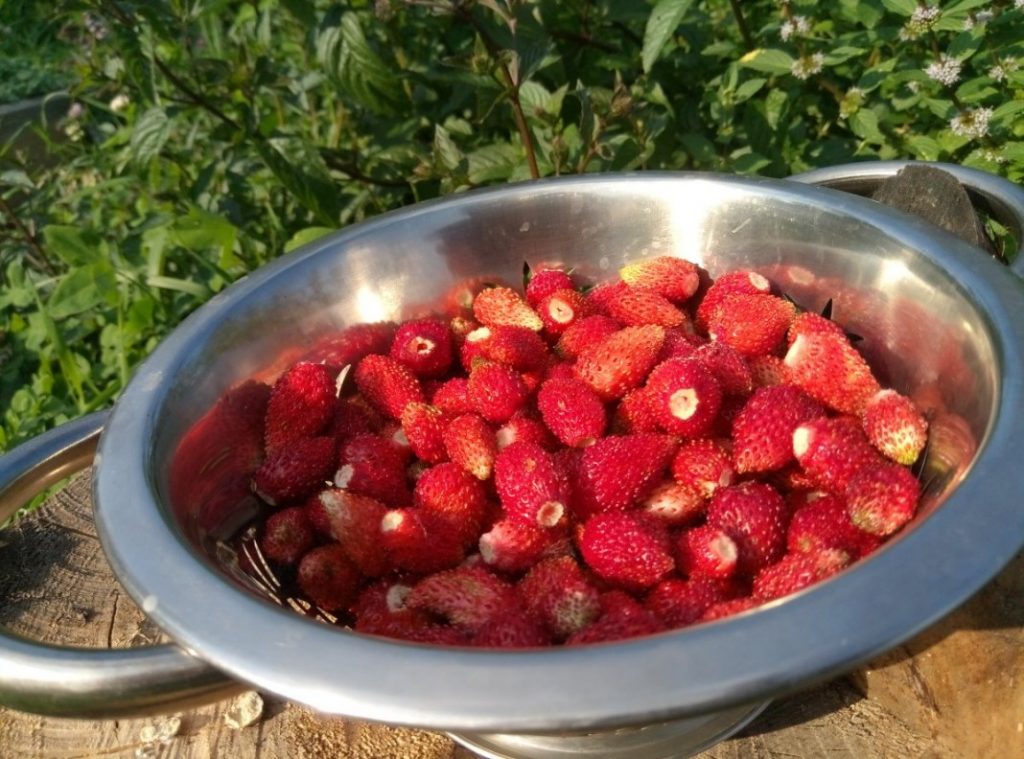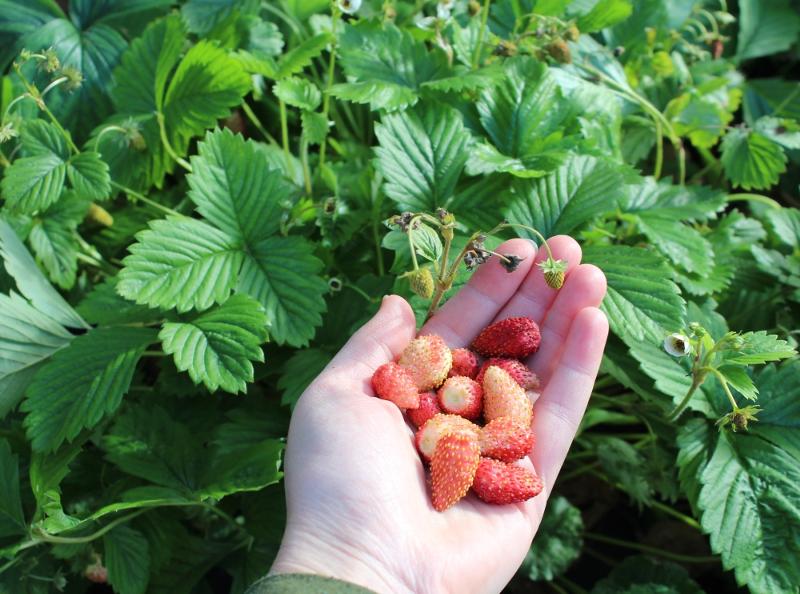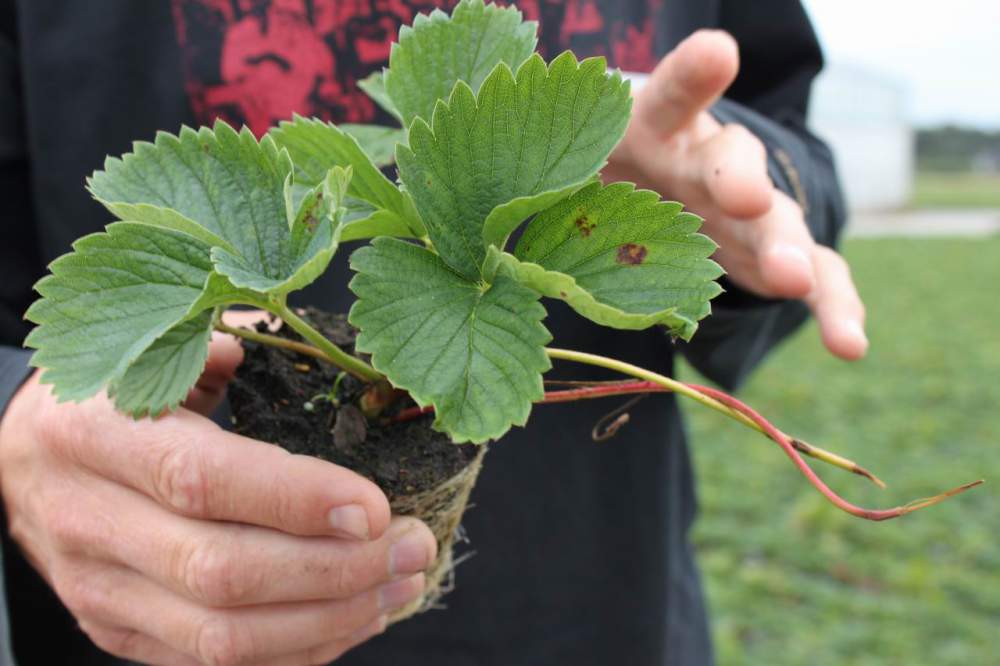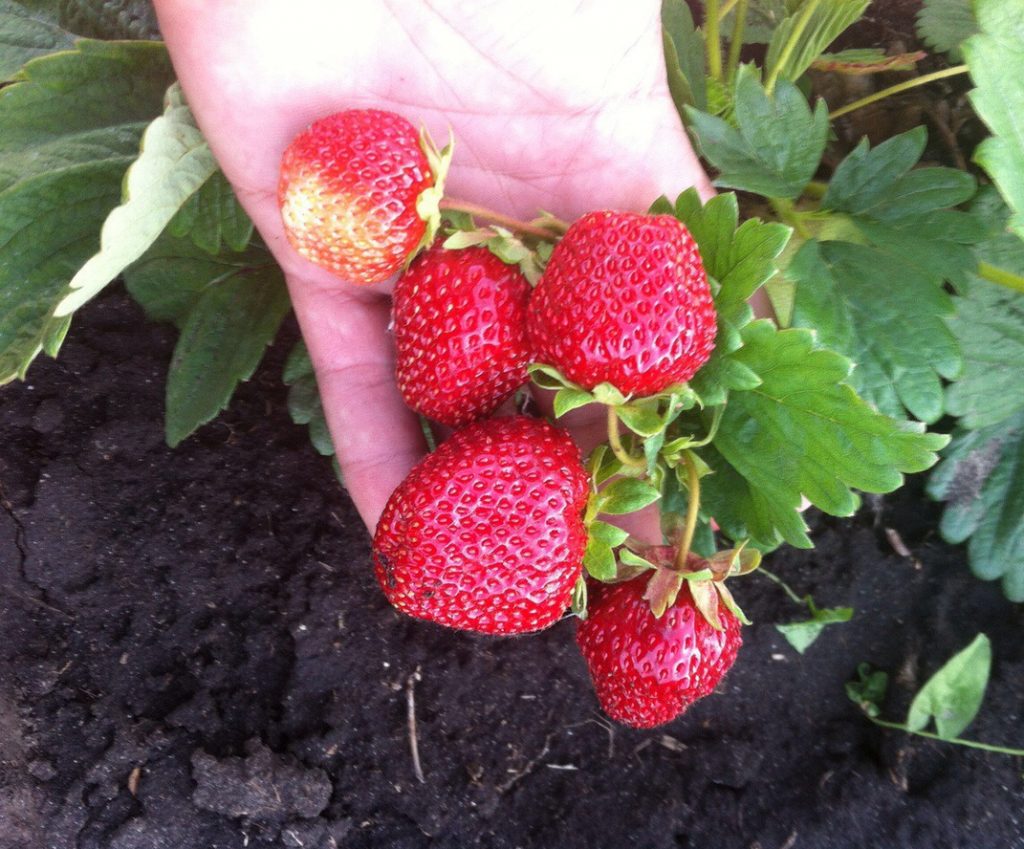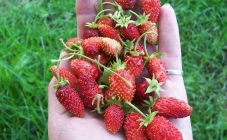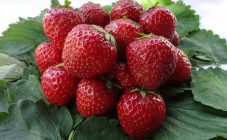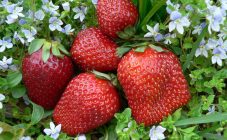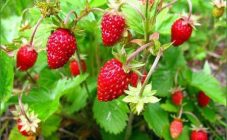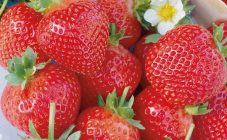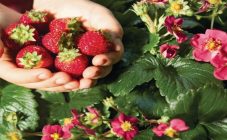Content:
Each gardener, choosing seedlings of garden strawberries on the market, seeks to acquire such that it can be harvested from it as long as possible. There are many such varieties, one of them is Baron Solemacher.
Features of the variety
Baron Solenmacher was bred almost a century ago by German breeders. Due to its qualities, the variety is among the leaders in the strawberry popularity rating. This strawberry variety belongs to remontant, which in French means “blooming again”.
After the first fruiting, fruit buds are laid in the plant, which soon bring a second crop. It can even be more abundant than the first and lasts until the frost begins.
A distinctive feature of remontant strawberries is that they are capable of forming flower buds with a long daylight hours and high air temperatures. She has a higher yield, but smaller berries than ordinary strawberries. It reproduces by dividing bushes and seeds, keeping all maternal qualities. Weakly susceptible to diseases and pests.
Characteristic
This strawberry variety has a dessert direction, its berries are very aromatic, to taste - sweet, with a slight sourness.
Their description:
- they are bright red in color;
- in shape - conical;
- small in size;
- their weight is about 5 g.
Sugar in berries - 8%, vitamin C - 82.4 mg per 100 g.
The strawberry bush is compact, medium-sized, slightly spreading. There are few leaves, they are medium-sized, light green, with small denticles at the edges. The flowers are small, bisexual, formed on short peduncles.
Strawberry Baron Solemakher - an early variety, begins to bear fruit from the beginning of June. Harvested in the first year of planting. The bushes bear fruit within 3-4 years, then they are transplanted to another place. Approximately 83.4 centners of wild strawberries are harvested from 1 hectare.
Reproduction methods
Baron Solemacher does not release his mustache, so the most common way is to divide the bush. The procedure is carried out in spring or autumn. An old bush, 3-4 years old, is dug up and divided into several parts. Each new division must have an outlet and a root system.
The second method of reproduction is seed. It is somewhat laborious, but the gardener has the opportunity to grow a lot of seedlings. It is used most often for industrial production of berries. However, some hobbyists also practice seed propagation.
Growing from seeds
To grow strong Solemacher seedlings, which then give a bountiful harvest, it is necessary to follow the correct planting technology.
- Selected strawberry seeds must be of high quality, from trusted producers. It primarily depends on how strong the bushes will grow.
- Sowing is done in late winter or early spring. The containers with strawberry seedlings will need to be artificially illuminated.
- The soil is purchased at a flower shop or made independently: garden soil is mixed with humus and a little wood ash is added. The soil is sifted through a sieve and leveled so that small seeds do not fall into the pits.
- Strawberry seeds must first be stratified: they are kept in the refrigerator for several days, wrapped in a damp cloth. Then they are sown into the prepared soil without deepening, covered with foil and placed in a warm place.
- Another way is to spread the seeds on top of the ground, cover with a layer of snow and put the container in a cold place for 10 days. The snow will gradually melt, while the seeds are self-embedded in the soil. Further, the air temperature is maintained within 18-20 ° C.
- When 3-4 leaves are formed on the strawberry seedlings, it must be dived. The procedure is carried out carefully, taking into account the fragility of the seedlings. Each of them is planted in a separate pot, preferably peat.
So that strawberry seeds germinate quickly and amicably, they are provided with comfortable conditions. The container is treated with an antifungal agent, the soil is disinfected with potassium permanganate. There should be no drying out of the soil, as well as excessive moisture. If the container is not ventilated periodically, mold may develop. With a lack of light, the seedlings will be weak, elongated.
It is not recommended to plant seeds in a pressed peat tablet. Peat is acidic, which is not good for strawberries. On the contrary, the soil with high acidity must be alkalized.
Planting strawberry seedlings
By the end of April, the seedlings are ready for planting on the site. The best predecessors for her will be dill, parsley, lettuce, garlic, carrots, onions. The worst - pepper, tomato, potato, eggplant. If you plant strawberries after these crops, they can become infected with fungal diseases.
Strawberries remontant Baron Solemacher loves an abundance of sun and warmth. Lowlands and damp areas are not for her. Landing is done in ridges, furrows, ridges. Sometimes, with a lack of space, or following fashion trends, the berry is planted vertically: in ladders, pyramids.
If the groundwater is close, high ridges, fenced with boards, are built for strawberry seedlings. They are usually made from boards. In dry soil, strawberries are planted in low ridges or furrows.
Bushes of the Baron Solemacher variety are planted in cloudy weather. The distance between them is about 35 cm, between the rows - 70 cm. Immediately after planting, it is watered and then mulched with compost or peat. Also, for these purposes, use black plastic wrap. It is spread on the ridges before planting strawberries and cross-shaped cuts are made in it. Then plants are planted in them. This method of mulching prevents weeds from germinating and helps retain moisture in the soil.
Care
In order for the harvest to be plentiful, the berries are large and fragrant, it is necessary to pay attention to the strawberries throughout the season. Here are some of the activities used to care for this variety:
- watering should be regular, but in moderation: an excess of moisture can cause the formation of putrefactive diseases, and the berries will be watery;
- loosening of the soil should be constant, after each watering;
- mulching with straw will help the earth stay moist for a long time, and dry berries;
- several times per season it is necessary to feed the plants;
- constant inspection is carried out to identify various pests;
- dried leaves are harvested to prevent pests.
Top dressing will give the strawberries strength for the growth and formation of berries. It is produced in the spring when digging, then after planting with a weak infusion of organic matter, with the addition of superphosphate and ash.
The next feeding - with the appearance of peduncles and ovaries - with a highly diluted mullein or bird droppings. The leaf can be irrigated with fermented nettle infusion. At the end of summer - only infusion of superphosphate with wood ash.
Diseases and pests
Although Baron Solemacher is resistant to diseases and pests, improper care (for example, watering in hot weather with cold water) can destroy the bushes. Processing them with a solution of Bordeaux liquid will be a prophylaxis against various diseases.
From insects, a strawberry mite can attack the plant. To get rid of it, use a 10% solution of karbofos.
Advantages and disadvantages
Baron Solemacher tastes like his fellow Weiss Solemacher, strawberries of these varieties have a lot of advantages, the main ones are:
- high productivity;
- grows and bears fruit not only in the beds, but also at home on loggias, apartment balconies;
- friendly germination of seeds;
- resistance to heat and cold;
- early ripening of strawberries;
- high resistance to diseases and pests;
- it is not difficult to grow.
The disadvantages include the fact that when breeding at home, the Baron Solemacher variety needs artificial pollination. To do this, gently shake off the pollen from the flower with a brush.
Baron Solemacher is suitable for planting in any region. Having planted this culture on the site, the gardener will feast on aromatic and tasty berries throughout the season.
